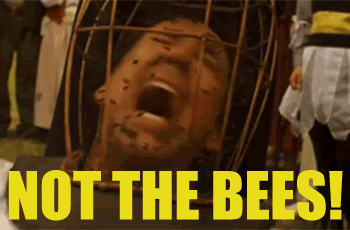Tiny Robotic Insect Takes Flight
Harvard engineers have built a flying insect the size of a coin.
A flying robot about the size of a U.S. Quarter has taken flight in the culmination of a decade long quest. The tiny robot, made of advanced ceramics and tiny actuators with submillimeter scale parts, is colloquially called the RoboBee. Worth noting: It's inspired by, and works more like, fly anatomy. "This is what I have been trying to do for literally the last 12 years," said Robert J. Wood, the Harvard professor heading up the team, "It's really only because of this lab's recent breakthroughs in manufacturing, materials, and design that we have even been able to try this. And it just worked, spectacularly well." Much of the robot's design had to be completely designed from the groud up - there just weren't off-the-shelf parts for something this small. "We had to develop solutions from scratch, for everything," said Wood.
The robot's tiny "flight muscles" are actually Piezoelectric actuators, little strips of ceramic that, when trigged with an electric field, expand and contract. The tiny frame is carbon fiber, and incredibly small plastic hinges embedded in that frame serve as joints. Each wing is controlled independently in real time - to ensure that the robot's rotation doesn't get out of hand. The team can also prototype more rapidly than ever, because they've pioneered a layered, laser cut manufacturing technique that allows them to fold the robot together out of a sheet like a pop up book. Overall, the tiny robot packs a ton of innovation into a tiny space, and there's more to come. RoboBee's temporary limitation is power - it trails a little power cord everwhere it goes, so new batteries are in order.
Small, dense batteries are just one part of the puzzle, though. Teams across the university are working on the other pieces of RoboBee - tiny robot brains, swarm programming, and research into insect behavior. The end goal is a swarm of cooperative, independent flying bugs that can relay video or pictures. Ideally, those bugs could be used to track climate data or search for missing persons.
Source: Harvard [http://www.seas.harvard.edu/news-events/press-releases/robotic-insects-make-first-controlled-flight]
If you like our science coverage, then check out the Geekend Update for more science news - it comes out fresh every Saturday.
[video=7193]
Permalink
Harvard engineers have built a flying insect the size of a coin.
A flying robot about the size of a U.S. Quarter has taken flight in the culmination of a decade long quest. The tiny robot, made of advanced ceramics and tiny actuators with submillimeter scale parts, is colloquially called the RoboBee. Worth noting: It's inspired by, and works more like, fly anatomy. "This is what I have been trying to do for literally the last 12 years," said Robert J. Wood, the Harvard professor heading up the team, "It's really only because of this lab's recent breakthroughs in manufacturing, materials, and design that we have even been able to try this. And it just worked, spectacularly well." Much of the robot's design had to be completely designed from the groud up - there just weren't off-the-shelf parts for something this small. "We had to develop solutions from scratch, for everything," said Wood.
The robot's tiny "flight muscles" are actually Piezoelectric actuators, little strips of ceramic that, when trigged with an electric field, expand and contract. The tiny frame is carbon fiber, and incredibly small plastic hinges embedded in that frame serve as joints. Each wing is controlled independently in real time - to ensure that the robot's rotation doesn't get out of hand. The team can also prototype more rapidly than ever, because they've pioneered a layered, laser cut manufacturing technique that allows them to fold the robot together out of a sheet like a pop up book. Overall, the tiny robot packs a ton of innovation into a tiny space, and there's more to come. RoboBee's temporary limitation is power - it trails a little power cord everwhere it goes, so new batteries are in order.
Small, dense batteries are just one part of the puzzle, though. Teams across the university are working on the other pieces of RoboBee - tiny robot brains, swarm programming, and research into insect behavior. The end goal is a swarm of cooperative, independent flying bugs that can relay video or pictures. Ideally, those bugs could be used to track climate data or search for missing persons.
Source: Harvard [http://www.seas.harvard.edu/news-events/press-releases/robotic-insects-make-first-controlled-flight]
If you like our science coverage, then check out the Geekend Update for more science news - it comes out fresh every Saturday.
[video=7193]
Permalink




